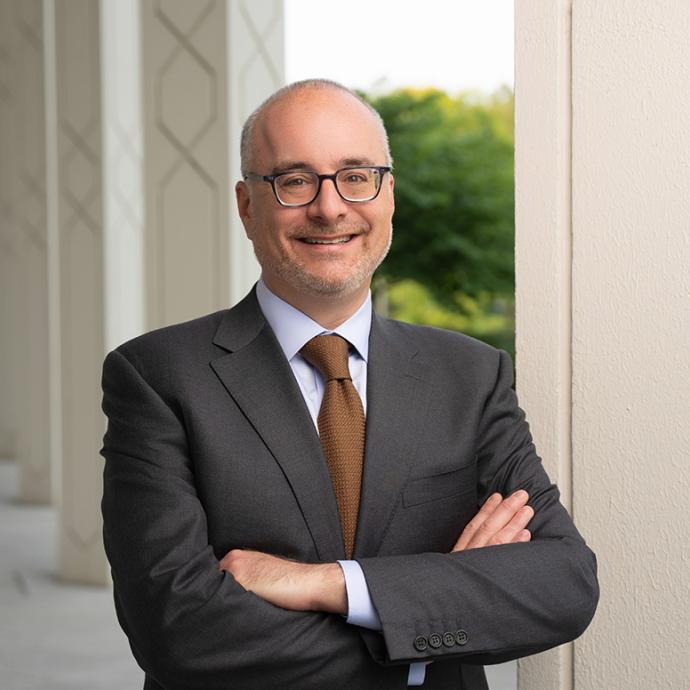Archaeologists across the world watched with alarm recently after the Islamic State group released a video of militants shattering ancient artifacts at a museum in Mosul, Iraq.
Outrage at the footage was widespread, but the threat to antiquities is nothing new, according to Lawrence Rothfield, associate professor in English. Rothfield is also one of the leaders of a Neubauer Collegium research project focused on the antiquities market, “The Past for Sale: New Approaches to the Study of Archaeological Looting.”
Across the globe, archeological sites are regularly looted and destroyed in a quest for antiquities that can be sold on the black market. “Sledgehammers are awful things; backhoes and shovels are just as appalling, if not quite as dramatic,” Rothfield said at the opening of a Feb. 27 conference focused on archeological looting.
The event, “Archaeological Looting: Realities and Possibilities for New Policy Approaches,” brought together an international group of researchers and experts to discuss the illegal antiquities market. The discussion will continue on March 16 at the University’s Center in Delhi with a conference focused on protecting India’s cultural heritage.
Gil Stein, director of the Oriental Institute, spoke on the Feb. 27 panel focused on the impacts of looting.
He said when archaeologists excavate a site, they carefully document the placement of each artifact to glean information about its history. Looters destroy that historical context, raiding sites for the most profitable objects and casting others aside, with no regard for the integrity of the site or the antiquities.
The damage is irreversible; the historical information destroyed by looting is gone forever. “Cultural heritage is a non-renewable resource,” Stein said.
Stein described looting as “a crime of opportunity” that flourishes during wartime and in periods of political instability.
antiquities sold to fund terrorism
Matthew Bogdanos, who also spoke at the conference, saw firsthand the links between instability and looting. As a Marine colonel on active duty, he led a recovery team into the Iraq National Museum in April 2003. Thousands of pieces had been stolen from the museum in the aftermath of the U.S. invasion.
What many Americans still don’t realize, Bogdanos said, is that the illicit antiquities trade isn’t just a cultural tragedy—it also funds terrorism. In 2007, Bogdanos wrote in the New York Times that “millions of dollars’ worth of antiquities flow out of the country each year. And it would be naïve to think the insurgents aren’t getting a major share of the loot.”
The same appears to be true of ISIS. A September 2014 New York Times op-ed piece revealed that ISIS is allowing local inhabitants to dig at archaeological sites in exchange for a cut of the looters’ profit.
happy reunions
Despite the ongoing danger to antiquities, there are success stories. In her presentation, Catherine Raymond of Northern Illinois University traced the history of a statue of the Buddha that had been smuggled out of Burma sometime in the 1980s.
The Buddha reappeared in Thailand in 1990, before making its way to New York in 1991. Once it was identified as a stolen piece, the FBI impounded the statue. Unrest in Myanmar kept the piece in the United States for more than a decade.
In 2012, the piece finally returned home. Even better, archaeologists reunited the statue with its base, from which it had been separated for nearly a quarter-century. Today, the piece sits in Myanmar’s national museum.
"It's priceless," Daw Nu Mra Zan, special advisor to Myanmar's museums, told the Christian Science Monitor in 2013. “I’m happy that a lot of people made an effort to return it.”
For archaeologists trying to curtail looting, the stakes are high. As the Oriental Institute wrote in a recent statement condemning ISIS’ actions in Mosul, “Without the past, we cannot understand our present, and without understanding our present, we cannot plan for our future.”










 —Prof. Kunle Odunsi
—Prof. Kunle Odunsi
